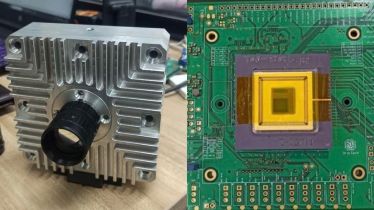By Shashwath TR
As a child watching Star Trek on my grandfather’s TV, the ambience of complete integration of the human and the computer in the environment always stuck with me. Over the years, we have seen technology, from mobile phones to Alexa, catch up with our imagination.
In this context, two advertisements stood out in the recently concluded ICC Cricket World Cup. One was for a fan you could speak to, “Fan, switch on” or “Fan, slow down.” The other was for a home smart lock – which could be opened via fingerprint, passcode, and even OTP. These ads signal the coming of the smart home era, where every household device is an IoT device. But the best is yet to come.
IoT explosion
We are seeing an IoT explosion across homes and offices. One segment is the smart home segment with smart fans, locks, refrigerators, bins, etc. Then there is an eco-friendly segment – lights that switch off when no one is around, cooling systems that are equipped to consume less energy, and so on. Another important growth area is the wearables segment – smart watches, patches, and rings.
Under the hood of our homes, we are seeing smart meters – for water, electricity and gas – enter our homes and cities.
What powers this explosion? Advanced semiconductor chips that pack more features in smaller spaces and use less power.
Automobiles
The next era of electronics is also changing another industry in a big way – automobiles. EVs – cars and bikes – rely heavily on chips to do even the more basic functions like managing power supply across battery cells.
Then there is the case of ADAS – Advanced Driver-Assistance Systems. From parking assistance to self-driving, these systems rely entirely on chips to do their magic.
Today’s automobile can be better described as a computer on wheels than a vehicle with a computer attached.
Security systems
Modern homes, workplaces and cities rely heavily on a network of security devices – access control and monitoring systems, including CCTV camera networks. These systems are becoming increasingly sophisticated. Some cities are implementing systems that identify traffic violators via cameras and send a penalty to their homes. Other cities are using the same cameras to find missing persons.
Some of these ADAS and security systems are “edge-enabled,” meaning that the processing occurs on the device itself and not the cloud. This requires the most modern chips.
The stuff of science fiction
We took examples of only three industries that are changing significantly. But everything around us is transforming. Yesterday’s science fiction is today’s reality! We have devices that can fold and bend, computers that can connect directly to satellites, and deliveries that are being delivered by drones. This is the era we live in.
The Roles of Startups
The explosion of semiconductor-enabled devices means an explosion of “requirements” for chip designers to fulfil with new chips. The dominant thought is that these new devices and chips will come from startups.
The reason for this is “The Innovator’s Dilemma” – a concept explained by American academic and business consultant Clayton Christensen in the book of the same name. A large company with a successful product will always try to keep selling that product. It has no incentive to develop new products that will disrupt existing ones.
Hence, the EV revolution came from a startup called Tesla, not Ford, GM, Chrysler or Toyota. Many modern breakthroughs in space tech were achieved by a startup – SpaceX – and not NASA or ESA. We see the same in India – Boat popularised the smartwatch, Ola and Ather popularised the EV scooter, and so on.
Enabling ecosystem
Building an electronics or semiconductor startup is extremely expensive and risky. Fortunately, the Government of India is batting for the industry by providing PLI, DLI schemes, and other support. Innovation hubs and incubators have sprung up nationwide – including in academic institutions. For example, the IITM Pravartak Technology Innovation Hub at the IIT Madras Research Park has incubated multiple semiconductor and electronics startups.
Summary
An explosion in new semiconductor chips with advanced functionalities has led to an exponential growth in smart devices around us – on us, at homes, workplaces, in common areas, everywhere. Startups are building and commercialising these products since older companies are occupied with selling their existing products. This is also true in India, where the ecosystem has started to support startups willing to take risks.
The author is co-founder, CEO, Mindgrove Technologies
